Energy-Saving Staycation in the Fraser Valley
One of Vancouver’s many virtues is that while it’s a gorgeous city in its own right, it’s also so close to many experiences and getaway destinations. I had the opportunity to plot and plan my own staycation recently, driving out to Cultus Lake to hang out with friends for the weekend. The catch? I was in a super slick, quieter than Judy Jetson’s vehicle, high-tech, electric car. The challenge, which I chose to accept, was to have an energy-saving staycation with BC Hydro, and I had such a blast!
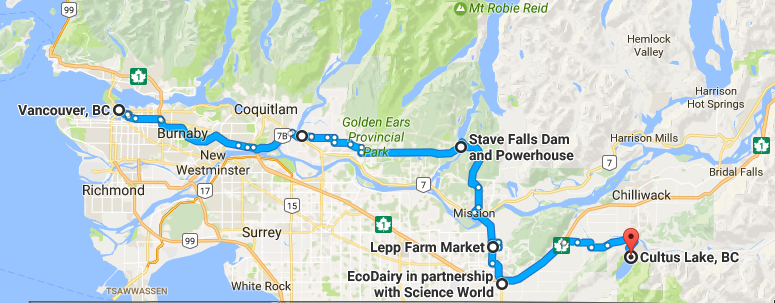
Unplugging at Home
When it comes to saving energy, the first step you can take is right at home. Leaving for the weekend? Turn down your thermostat, turn off lights (or set a timer), and unplug any unnecessary power-sucking devices.
Farm Market Shopping
The first step I took when heading out to the Fraser Valley, was to stop at my favourite markets like Hopcott Meats in Pitt Meadows, and Lepp Farm Market in Abbotsford. These family-owned markets have an amazing selection of local produce and products year-round along with cafés that serve up everything from sizzling pulled pork or grilled cheese sandwiches to eggs benny and waffles.
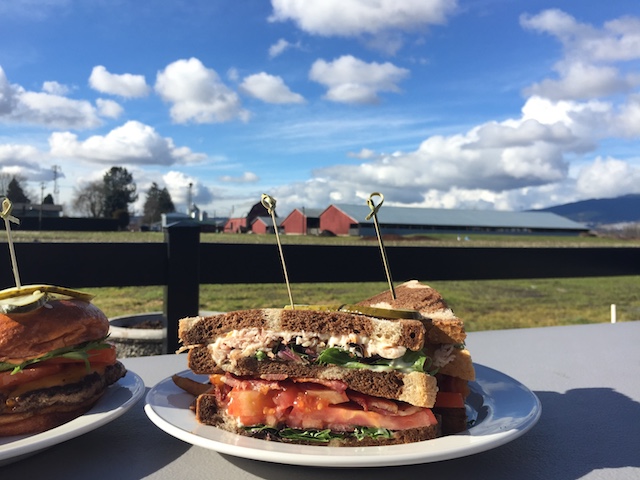
My giant Clubhouse sandwich from Hopcott
Hiking and Local History at Stave Lake
After loading up with lunch, and groceries for dinner later on, a hike with a side of history fit the bill. We stopped by the Stave Falls Visitor Centre.
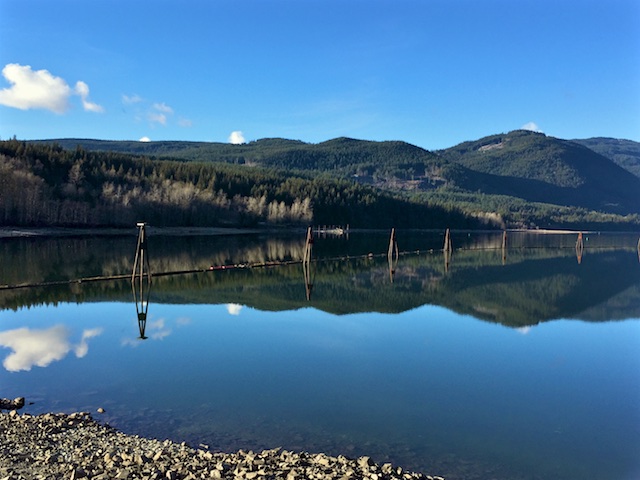
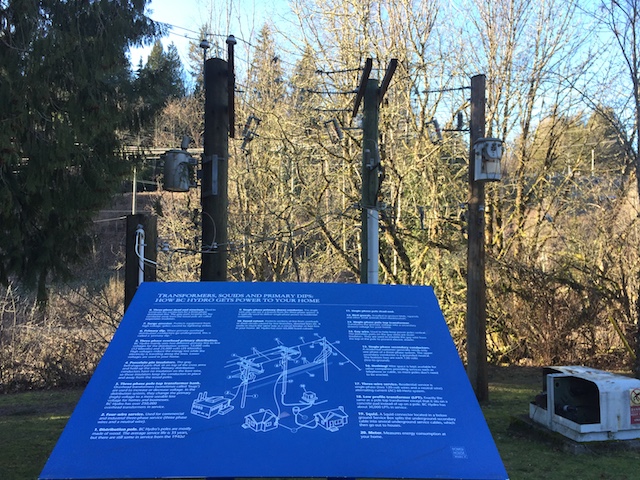
The Powerhouse at Stave Falls is a 100-year-old power generating facility, as well as a National Historic Site of Canada. The powerhouse remains intact from its days in operation, making it an amazing place to learn how electricity is made and explore the history of power in BC. Nearby, you’ll find trails, picnic areas, a dog beach, and viewpoints at BC Hydro Recreation Sites, Hayward Lake and Stave Lake.
Charging up at the Eco Dairy
Turkeys, mini donkeys, baby goats, oh my! The Eco Dairy in Abbotsford is quite the experience, and it just so happens to be home to a super-fast Level 3 Electric Vehicle (EV) charger. For no fee, you can charge your EV here in just 30 minutes. This is just 1 of 30 DC fast chargers BC Hydro has installed across the province. While you’re waiting, you can shop at the market, tour the Eco Dairy, and visit with some of the animals that hang out in pens right by the parking lot.
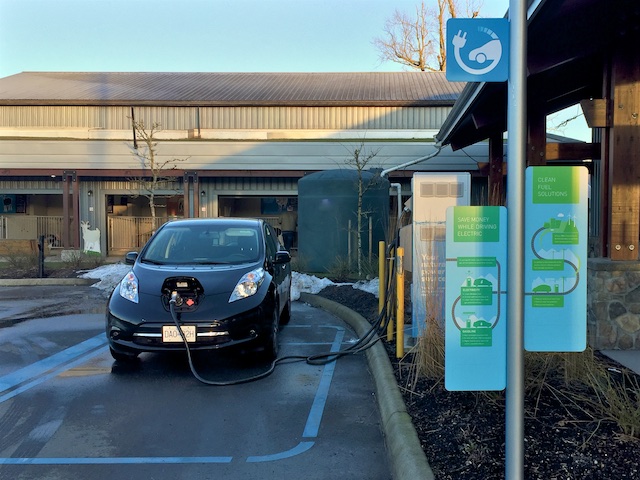
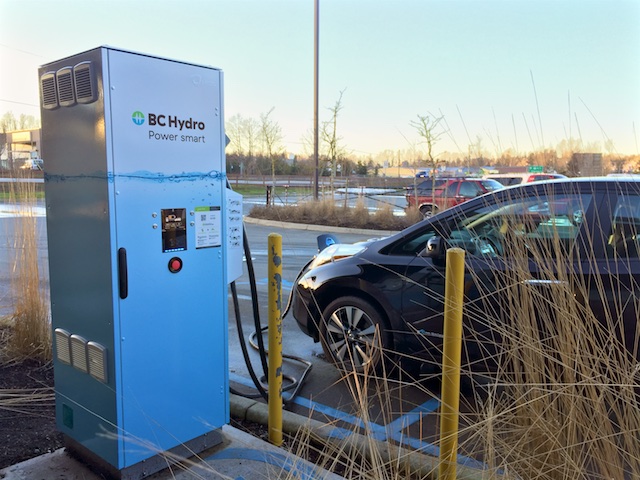
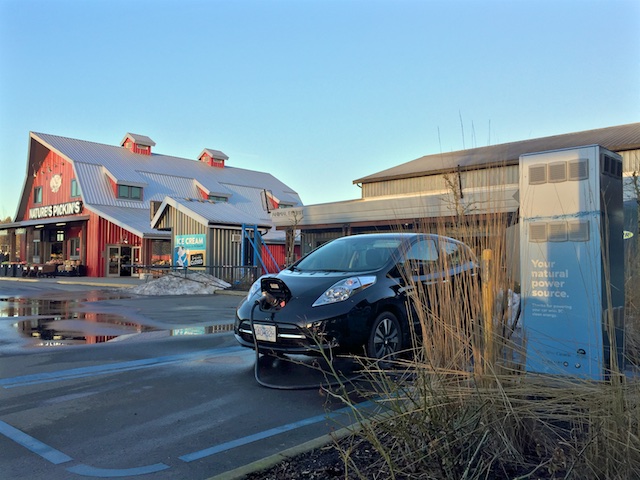
Weekend at the Cottage by the Lake
Winding around the provincial park road and arriving at the cottage, I plugged the car in for the night to gain back the full charge I had at the Eco Dairy. A display of three lights on the dash showed me the progress of the charge, with the third one blinking as it topped up. I was now about 110km from home, after a full day of adventures, and was ready to share my market haul with friends, chill by the fire, and enjoy the weekend away.
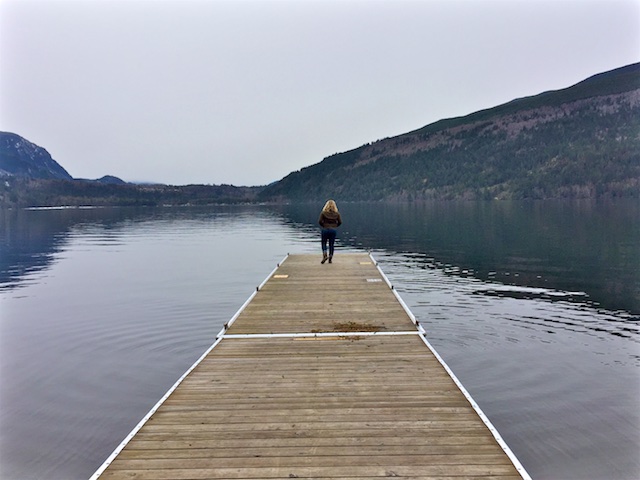
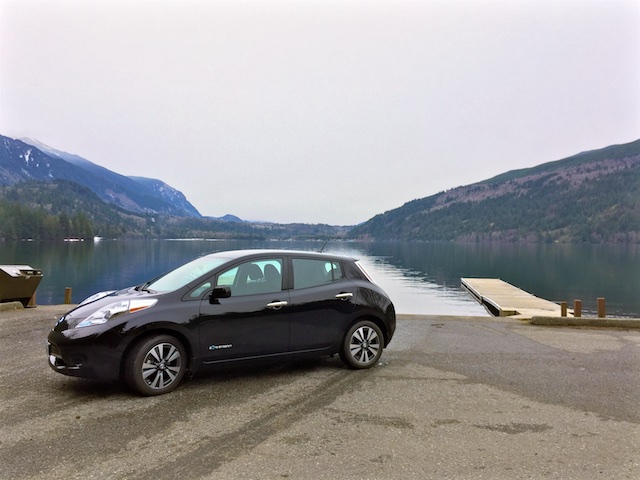
Since I spent the weekend with an EV, I feel far more comfortable thinking about it as a viable, everyday mode of transport. Here are some of the questions I had before going into this – questions that others also asked me when they saw me with the vehicle:
- How far can you go?
I was driving the Nissan Leaf, which told me my range based on my battery level. This is just one of approximately eight models of EV available in Canada today. The display was like a smartphone, in that it shows you your power percentage, and on a full charge the range displayed on the dashboard was about 185km. - How does it plug in?
The Nissan Leaf has two sockets. One for a high power station which will appear as CHAdeMO on apps and signage, and another is a regular EV plug. When you pull up to a charging station, the station has plugs and cables attached, like how a gas station has hoses and nozzles. The Leaf also has an extension cord that converts to a regular three-pronged plug on one end so that you can plug into any household outlet as well. - What does it cost to plug in?
It depends on where you’re charging. You can use the PlugShare app and map to find charging stations, and it should list the details of each (and even have star ratings for each) right on the map pins. For some it’s just a few dollars, for others you just have to pay for the parking rate at the lot in which the station is located. The Eco Dairy (since the publishing of this post) now charges $0.35/kWh. For BC Hydro chargers, it’s free! If you’re charging your car at home, the Nissan Leaf costs about $3.00 per 100km.
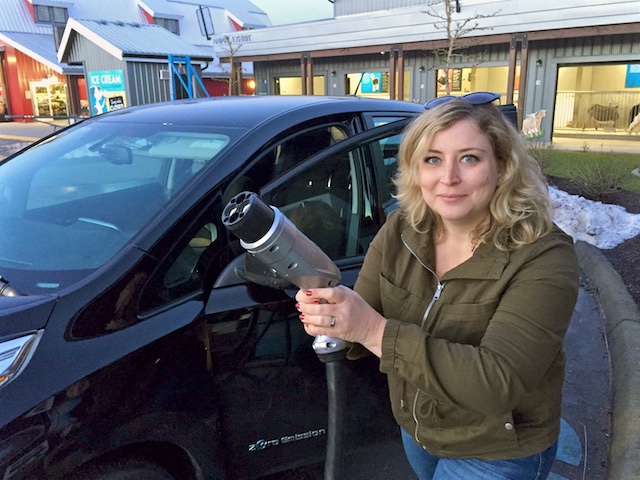
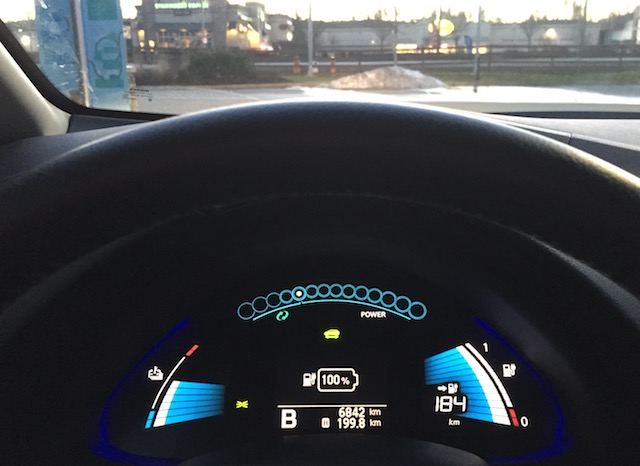
What started out as a bit of an anxious road trip – with “range anxiety,” as my friend called it, as I watched the charge percentage drop upon accelerating – ended up being a really fun driving experience. The Nissan Leaf has an Eco Mode that will display evergreens when you’re driving in an eco-conscious way (not flooring the accelerator), and you can even gain charges if you’re in “B” mode. This uses the car’s own energy upon braking or going down a hill to replenish power. I went from 52% to 54% going down the hill on Canada Way in Burnaby coming back into town!











2 Comments — Comments Are Closed
Hi,
Here are some locations to charge your EV in Chilliwack:
-Visitor Centre
-City Hall
-University of the Fraser Valley, Chilliwack campus.
While you are in our community, stop at the visitor centre for suggestions on how to spend a day in ”The Great Outdoors”
Even greener – don’t even bother with a car at all. I’ve had an electric-assist bike for many years and have gotten to be quite an expert at the charging/range thing. My battery is rated at 14 amp/hours and a display on my handlebar tells me how much of that I’ve used up. If I’m being liberal with the juice I get about 4 kilometers per amp/hour, which means a range of only 56 kilometers if I use up all 14 amp/hours (which I don’t want to do – for battery health I shut it off when it gets to about 12.5 and if I’m not home yet I just pedal the rest of the way under my own power). If I’m more stingy with the battery power and do more of the work, then I can squeeze 7-8 kilometers from 1 amp/hour and extend my range to over 100 km. The electric-assist bicycle is immune to traffic jams, can carry lots of cargo if it’s fitted out with good panniers, and is insanely fun to ride. Should you run the battery out you can still pedal the bike and get home (unlike a car with a depleted battery, which is a dead-weight for several hours, assuming one can get to a charging station). Bikes can also be taken on Skytrain and Seabus (but e-bikes can’t go on bus racks, even with the battery removed, a lousy policy given that my battery-less bike weighs less than a downhill mountain bike, which is allowed). Touring out to somewhere like Cultus Lake might involve an extended lunch break during which one can recharge the battery (if you pack the charger with you). It’s a system I’ve used many times tripping to Victoria, topping up on the ferry and any other stops along the way. Riding a good e-bike is a unique experience, one that can’t be appreciated until experienced, and I recommend you give it a try once the weather improves a bit.